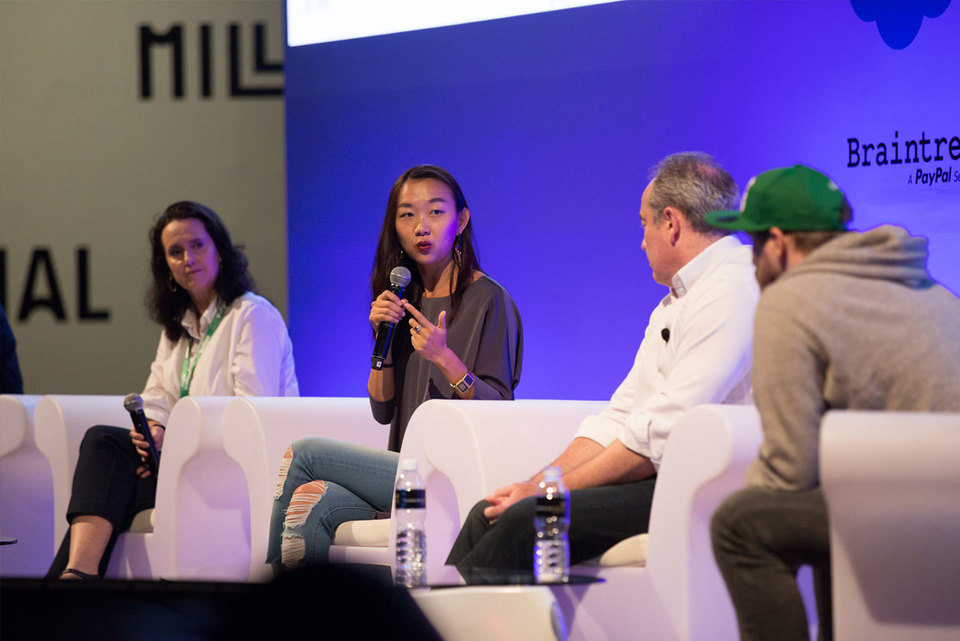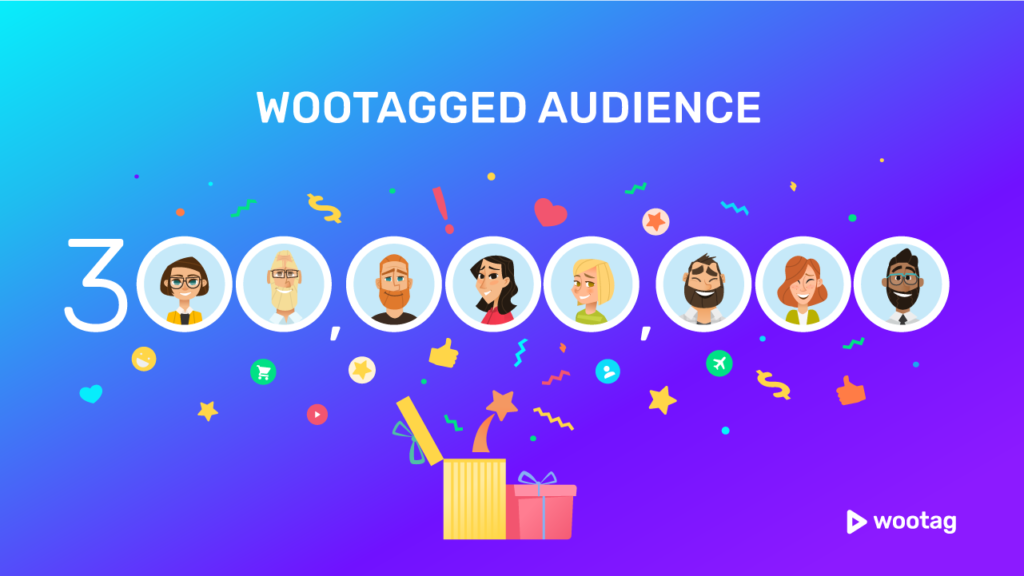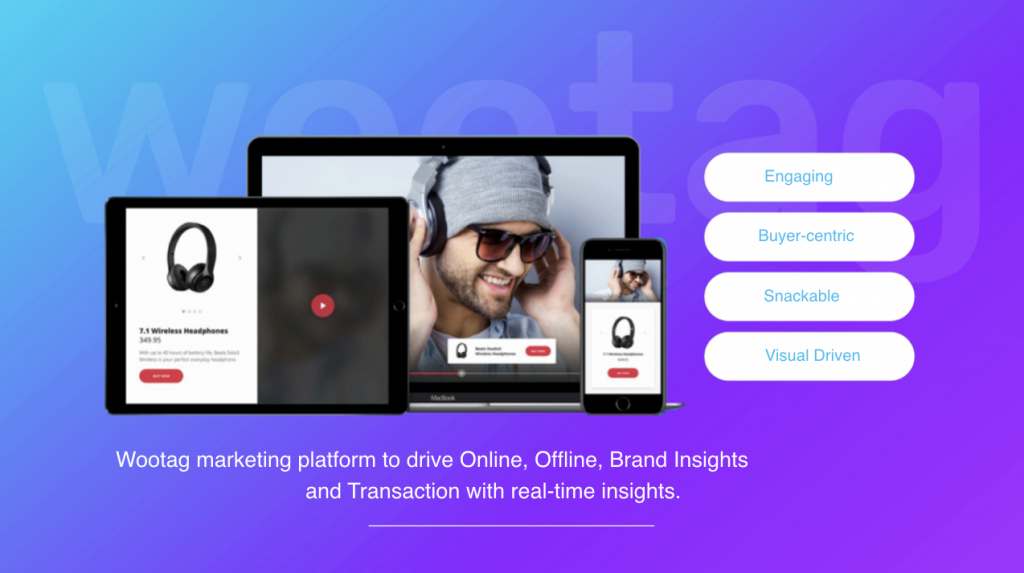The Millennial 2020 conference celebrates the continuous innovation of start-ups and changes taking place in the digital commerce experience.
With a flurry of change, the digital commerce revolution leaves users with much to aspire to and be excited about. It’s tough staying on top of experience-led campaigns and understanding how best to use the variety of platforms and technologies, which leaves Millennial 2020 as a prime space for learning, exchange and synergy.
Wootag is honoured to be named as one of the 30 most promising start-ups under the Unilever Foundry, a recognition of reinventing the customer experience, injecting interactivity to video and adding a human simplicity to digital commerce.
We had the opportunity to sit in on some of the engaging panel discussions and here are some invaluable observations on industries including travel, digital commerce, the sharing economy and evolving content providers.

Technology-Driven Trends Shaping the Travel Industry Today
The industry is meeting the increasing demand for experience-led hotel brands in a variety of formats. Emerging technologies such as virtual reality, augmented reality, artificial intelligence and robotics are also shaping the face of the industry and driving the customer journey.
One of the lesser known insights is that consumers often research their destinations and compare prices and other trip criteria during their “distractions”. In fact, the purchase decision often takes place upon viewing a video as Google findings show 72% of business travellers and 74% of wealthy travellers finalise booking right after watching a video.
Video will need to be packaged to play well on mobile screens during a user’s “spare time” and tell stories that make travel accessible through technology in various ways. Destinations will also need to have a sense of “home and familiarity” and this can be achieved through videos with a tone of voice that strives for authenticity and presents relatable experiences.
Personalisation in digital commerce has no right form or limit
One of the most important characteristics of any digital commerce site is their ability to segment products and group brands, not just by function or type but according to their user activity. There need to be areas for consumers to be able to decide for themselves how they would like to customise a product or have opportunities for contextual messaging, where a product is displayed only according to a user’s location, device or behaviour. Real-time personalisation is the most dynamic and innovative option as it is capable of presenting personalised messaging across devices, platforms and omnichannel.
Digital commerce videos will need to create stories that apply to the customer’s state of emotions and define what for them is an inspiring or meaningful experience. Just as there is no average or ordinary customer, similarly your video should never be either of these.
What does it take to own a unique value proposition in the sharing economy?
The travel and hospitality industry has been completely taken by storm and is the area where the sharing economy has struck a particularly forceful chord. As this pressure causes the innovations in the industry to rethink the ways of product development, marketing and brand storytelling, players must accept it is a human-centred space at the end. The importance of driving emotional connectivity and cultural relevance in a brand is stronger than ever before in today’s crowded marketplace.
With the access of informed opinions and expert insight available, consumers are more appreciative of an individualistic experience. They have a desire to be environmentally conscious in what they consume as well as have a stronger desire to connect with other people – which makes the strangers offline as important points for brand recognition and expansion.
People also want to follow real people they can relate to and share experiences with. Hence, in developing their in-stream online video channels, brands of the sharing economy will need to ask themselves the following
- Who represents the brand?
- Who has meaningful content?
- What does their brand stand for?
- What is the message in their captions?
Driving relevance in storytelling with a mission and content that sells and engages
Across differing channels, relevance is the quality of utmost importance. Content players whether you are a brand or a content site will need to learn from customer behaviours in order to understand opportunities for content monetisation.
Content players like Mashable and Discovery Channel are also giving extra caution to how they use video to deepen and add dimensions to their storytelling. Content players such as the above are placing an opt-in on their content rather than to be at the mercy of Facebook, whose algorithms and metrics decide what you push out.
Mashable’s approach is to upload a video to a story when it is reposted in place of the image and use the video complement to a story as an update giving a ‘live’ and ‘personal’ feel. For Discovery Channel, its philosophy is that regardless of how impressive the market, the nuts and bolts lie in satisfying a viewer’s curiosity of the world. Whether it’s content that is founded on good research, insider perspectives or that lends itself to social debate and exchange, these will form a universal culture of “experiential” storytelling.
How do you differentiate yourself with a killer campaign?
In pulling off a shareable and effective campaign, ask yourself these questions: Is it engaging and it relevant to the audience I am targeting? Is it addressing a need? Killer campaigns do not necessarily need killer budgets or the most advanced technology. As long as you possess a unique idea that meets the needs of the user, distinct point-of-view and it is executed in a unique way, you have a stronger possibility at being a diamond in the rough.
A video should be a second level, complementing the visual in the campaign. Put accompanying subtitles to visually contextualise the message and enhance its meaning. Being educational in a different way is also a good way of engaging millennials.
Your video campaign should provide testimonials that showcase your credibility or present tutorials on a focused topic that highlight your unique capabilities. There are also a variety of video formats you can explore to draw out audience engagement. In the case of targeting millennials, they desire “mobile-friendly” consumer experiences most and your video should contain a story that comes alive on mobile, be it the visual impact or the call to action desired.
Millennials today crave inspiration and a tone of voice that speaks to them with conviction. Whether it’s making the point of purchase more like a conclusion to a gripping story or creating a more personalised and humanised voice, relatability is key.
Wootag allows videos to be equipped with these qualities through an interactive platform that gives you the flexibility of editing, distribution, sharing across channels and measuring its performance. You’re targeting customers who have strong interests and needs that need to be reflected in what they consume. Reduce any barriers between you and them so as to develop a continuous relationship of trust.
Images courtesy of Millennial 2020 and Rackspace.





